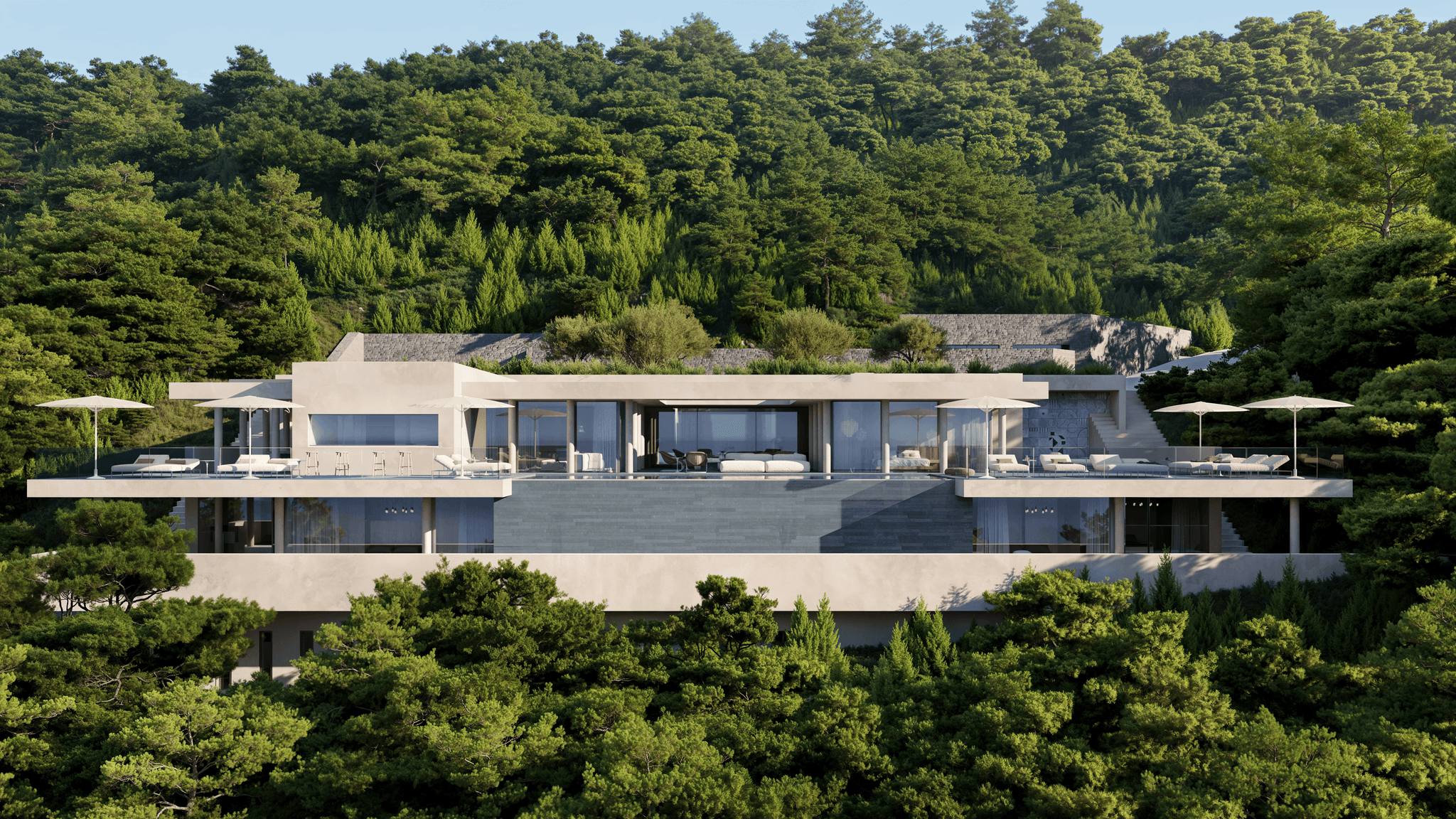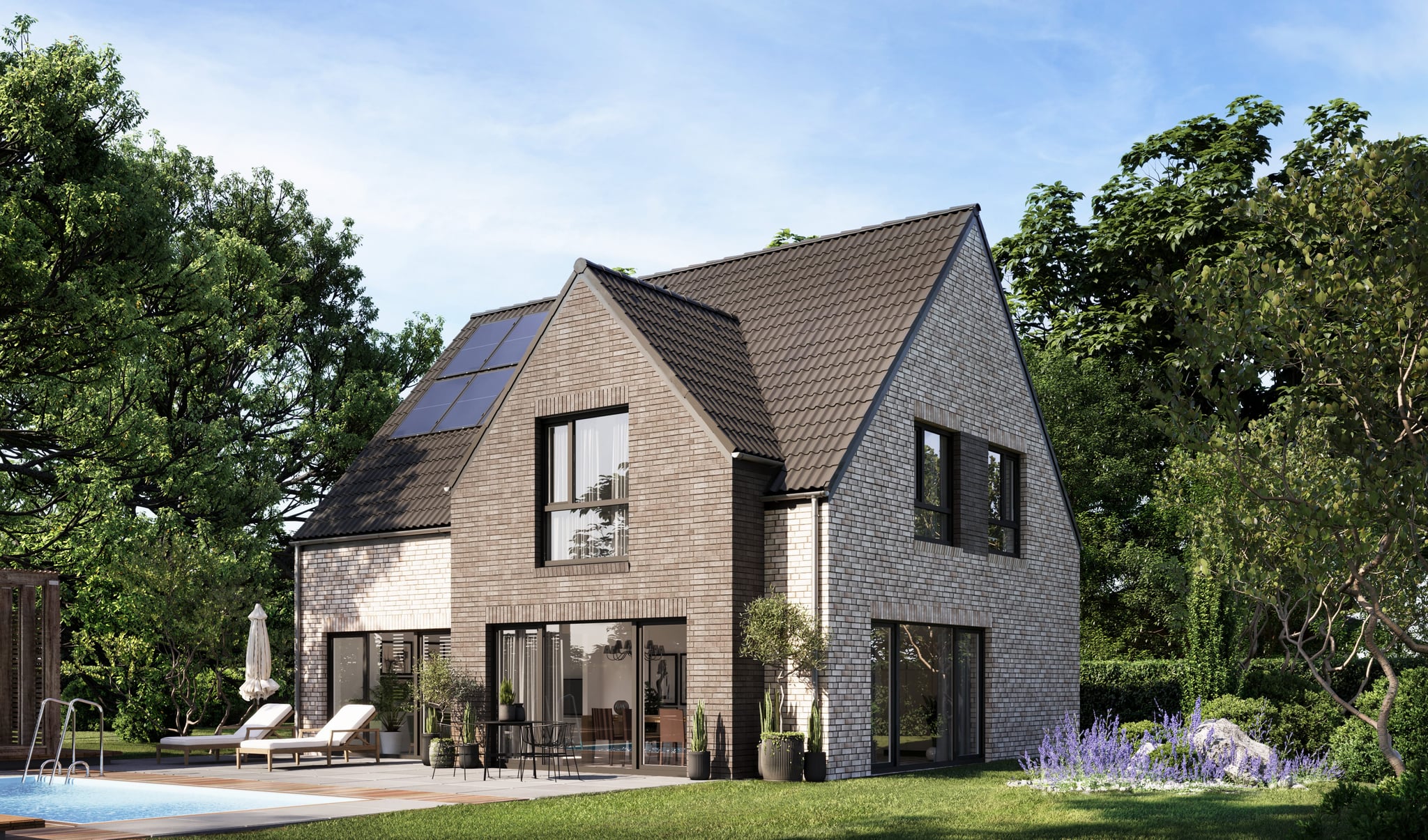The Impact of 360-Degree Visualization on Real Estate Projects
Imagine if your clients could experience your real estate projects before a single brick is laid. With 360-degree visualizations, this idea becomes a reality and opens up entirely new possibilities for property marketing.
In the world of real estate, convincing potential buyers or investors of a vision is not always easy. Traditional images and plans often fall short in making a project truly come alive for customers. This is where 360-degree visualization comes in. In this blog post, we'll take a closer look at how this innovative technology influences real estate projects and what benefits it brings to developers, architects, and real estate agents.
What is a 360-Degree Visualization?
A 360-degree visualization is a virtual representation of a property that allows viewers to look around freely—in all directions. Users can move around the space, change their viewpoint, and experience the property in a realistic way. The key benefit: customers feel as if they are standing in the room, even if the building is not yet completed. This means potential buyers can get a vivid impression of the property during the planning phase.
The Benefits of 360-Degree Visualizations for Real Estate Projects
360-degree visualizations offer a range of benefits that can elevate your real estate projects to a new level. From realistic experiences to increased flexibility in presentation—find out how this technology can revolutionize your property marketing.
1. Realistic Spatial Experience
An example: In one of our recent projects for a new residential building, potential buyers were able to experience a complete 360-degree tour of the rooms during the planning phase. One buyer later mentioned that being able to move virtually through the apartment and explore the different rooms in detail was crucial to his decision to buy. This immersive experience helped him build an emotional connection to the property before construction was even completed.
A picture may be worth a thousand words, but a 360-degree tour says even more. With 360-degree visualizations, prospects can truly experience the property. They don’t just see the space—they can explore it, discover every corner, and feel like they are actually there. MotionPanos, in particular, offer a new dimension to the spatial experience, allowing users to move freely and even measure room dimensions.
Check this example of a 360-degree visualization in action here: House Nr. 8.
2. Flexibility in Presentation
360-degree visualizations can be used both online and offline. They are perfect for platforms like company websites, Instagram, Facebook, real estate exposés, brochures, and more. This allows you to present your real estate projects anywhere and anytime—whether on-site in the showroom or online from home. Using VR headsets makes the experience even more immersive, which is especially impressive when presenting new construction projects.
3. Time and Cost Savings
Anyone who has organized viewings for a property knows how time-consuming it can be. With a 360-degree visualization, you can save up to 50% of the time normally spent on viewings, as well as avoid expensive photo shoots and complicated plans. A virtual tour can be made available at any time without needing physical access to the property—ideal for properties under construction or those in hard-to-reach locations.
4. More Emotions and Customer Engagement
A 360-degree tour conveys far more emotions than a static image. The realistic views make prospective buyers feel as if they are already there. Additionally, sound effects or music can be incorporated to enhance the experience. For example, nature sounds or a pleasant voiceover can add the finishing touch to the experience and strengthen the emotional connection to the property.
5. Easy Integration of Additional Information
Another advantage of 360-degree visualizations is the ability to integrate control elements, information windows, or logos directly into the tour. Customers can access additional information without leaving the visualization, making the tour not only more informative but also more interactive.
FAQ About 360-Degree Visualizations
These FAQs provide quick answers to common questions about 360-degree visualizations. They help you better understand how this technology works and the benefits it offers for your real estate project.
How Does a 360-Degree Visualization Work?
A 360-degree visualization works by combining multiple panoramas into a tour. The viewer can move freely within the space and change the viewpoint using natural head movements (in VR mode) or with the mouse.
What Are the Benefits of a 360-Degree Tour Compared to Traditional Images?
A 360-degree tour provides a realistic, immersive experience. Unlike standard images, viewers can look around freely, which sparks their imagination and makes the experience more intense.
Do I Need Special Hardware for a 360-Degree Tour?
No, special hardware like VR headsets is not mandatory. The 360-degree tours can also be viewed on a computer, tablet, or smartphone. However, using a VR headset makes the experience even more immersive.
What Projects Are Suitable for 360-Degree Visualizations?
360-degree visualizations are ideal for new construction projects, renovations, showrooms, office layouts, and much more. They offer a versatile way to present spaces in an engaging manner.
Can I Use a 360-Degree Tour Offline?
Yes, 360-degree visualizations can also be used offline, for example at trade shows, in brochures, or in showrooms to provide an impressive experience for clients on-site.
Conclusion: 360-Degree Visualizations Revolutionize the Real Estate Industry
If you're curious about how 360-degree visualizations can take your real estate projects to the next level, contact us today. We're happy to advise you and show you how to bring your vision to life.
360-degree visualizations are a powerful tool for marketing real estate projects. They provide a realistic, interactive experience that goes far beyond what traditional images can offer. They save time and costs, enable emotional customer engagement, and are versatile—whether used online or offline. If you want to present your real estate projects in a lively and modern way, 360-degree visualizations are the way to go.

